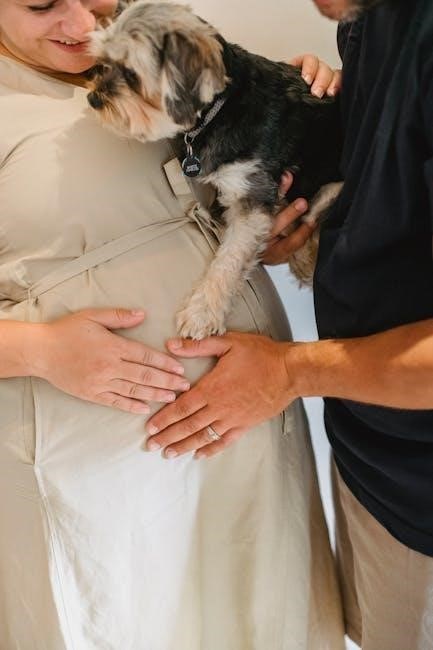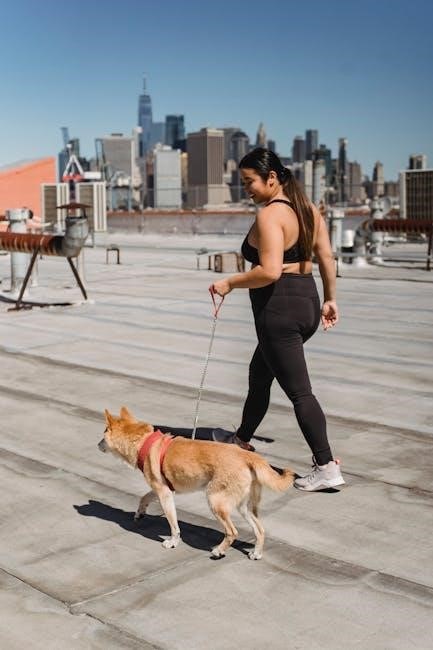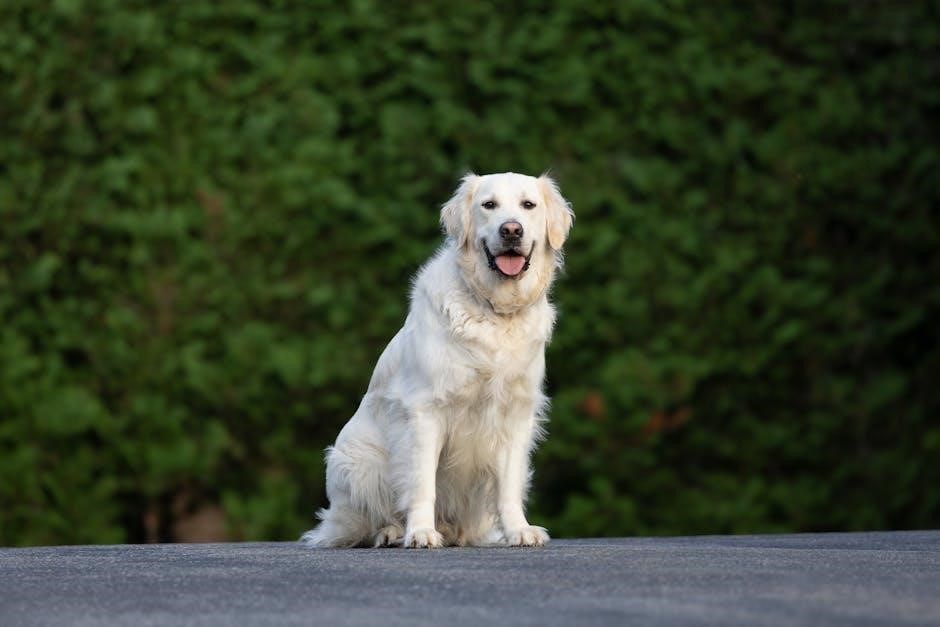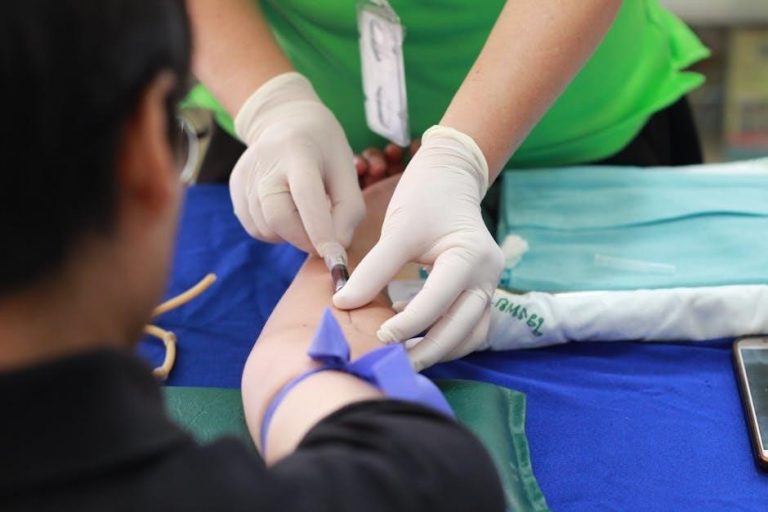Welcoming a new puppy is an exciting journey, but it requires careful preparation. A comprehensive new puppy checklist ensures you’re ready for the responsibilities ahead, covering essentials like supplies, vet visits, and training. This guide helps you create a smooth transition for your new furry friend, making their homecoming joyful and stress-free for both you and your puppy.
1.1. Preparing for a New Puppy
Preparing for a new puppy involves creating a welcoming environment and ensuring all necessities are in place; Start by gathering essential supplies, such as food, water bowls, a crate, and bedding. Schedule a vet visit within the first few days to monitor health and begin vaccinations. Puppy-proof your home by securing toxic substances, electrical cords, and fragile items. Budget for recurring expenses like food, vet bills, and toys. Research training methods and establish a routine for feeding, exercise, and playtime. Consider pet insurance to cover unexpected medical costs. Finally, plan for socialization and house training to help your puppy adapt smoothly to its new home.
1.2. Understanding the Importance of a Checklist
A new puppy checklist is essential for ensuring a smooth transition into puppy ownership. It helps you stay organized and prepared, covering all critical aspects of care, from supplies to vet visits. By having a structured plan, you can avoid last-minute stress and ensure your puppy’s needs are met. A checklist also serves as a guide, reminding you of key tasks like scheduling vaccinations, setting up a crate, and stocking up on essentials. It helps prioritize tasks, ensuring no important details are overlooked. This organized approach not only benefits you but also guarantees your puppy receives the best possible start in their new home.

Essential Supplies for Your New Puppy
Stock up on food, water bowls, a crate, bedding, toys, grooming tools, and poop bags. These essentials ensure your puppy’s comfort, safety, and health from day one.
2.1. Food and Water Essentials
Providing the right food and water essentials is crucial for your puppy’s health. Start with high-quality puppy food suitable for their breed and age. Stainless steel or ceramic bowls are ideal for durability and hygiene. Ensure fresh water is always available to keep your puppy hydrated. A consistent feeding schedule helps establish a routine, while a measuring cup prevents overfeeding. Avoid adult dog food initially, as puppy food contains essential nutrients for growth. Store food properly to maintain freshness and safety. Consult your vet for dietary recommendations tailored to your puppy’s needs, ensuring a strong foundation for their development.
2.2. Bedding and Crate Setup
Setting up comfortable bedding and crate is essential for your puppy’s comfort and safety. Choose durable, washable bedding like orthopedic mattresses or pads to support their joints. A crate helps with training and provides a secure space for your puppy to relax. Select a crate that’s the right size for your puppy to stand, turn, and lie down comfortably. Add soft blankets or a crate-specific bed for warmth. Place the crate in a quiet, central location to make your puppy feel safe. Avoid using old furniture or towels that may harbor odors or allergens. A well-prepared crate and bedding create a cozy environment, encouraging your puppy to rest and reducing separation anxiety. This setup also aids in house training and prevents destructive behavior when unsupervised.
2.3. Hygiene and Grooming Items
Proper hygiene and grooming are crucial for your puppy’s health and comfort. Essential items include a soft-bristle brush or slicker brush for coat maintenance, a toothbrush and puppy-safe toothpaste for dental care, and nail clippers to prevent overgrowth. Shampoo and conditioner formulated for puppies are necessary for baths, along with a washcloth or sponge. Include a towel for drying and a clean, absorbent mat for post-bath cleanup. A flea comb and tick removal tool are also vital for regular checks. Additionally, dental chews or toys can help maintain oral hygiene. These items ensure your puppy stays clean, healthy, and well-groomed, while also helping you build a routine that promotes bonding and prevents potential health issues.

Puppy-Proofing Your Home
Puppy-proofing ensures your home is safe for your new furry friend. Secure hazardous items, cover electrical outlets, and block off unsafe areas with gates or barriers to prevent accidents.
3.1. Safety Precautions for Your Home
Ensuring your home is puppy-proofed involves several key safety measures. Start by identifying potential hazards such as loose wires, toxic substances, and fragile items. Secure these by using cord protectors, locking cabinets, and moving valuables out of reach. Electrical outlets should be covered with safety plugs to prevent accidental shocks. Additionally, block access to dangerous areas like the kitchen or bathroom using baby gates. Installing safety latches on doors can also help protect your puppy from potential dangers. By taking these precautions, you create a secure environment that allows your puppy to explore safely and reduce the risk of accidents.
3.2. Secure Storage for Hazardous Items
Properly storing hazardous items is crucial to safeguard your puppy from harm. Common household dangers include cleaning supplies, medications, and toxic substances. Use locked cabinets or high shelves to keep these items out of reach. Secure containers with tight-fitting lids can prevent accidental ingestion. Additionally, consider investing in safety locks for drawers or cupboards where hazardous materials are stored. Always double-check that these items are inaccessible to your puppy. Regularly inspect expiration dates and dispose of expired substances safely. By implementing these storage solutions, you minimize risks and create a safer environment for your puppy to explore and thrive.
3.3. Creating a Safe Zone for Your Puppy
Designating a safe zone for your puppy is essential for their comfort and safety. A crate or puppy-proofed room serves as an ideal space where your puppy can relax without hazards. Line the crate with soft bedding like a familiar blanket or a snug toy to provide reassurance. Ensure the area is quiet and away from high-traffic zones to minimize stress. Place a few non-toxic toys and chewables within reach to keep your puppy entertained. Supervise your puppy during exploration to prevent accidents. By creating this safe zone, you help your puppy adjust to their new environment while reducing the risk of harm. A well-prepared space ensures peace of mind for both you and your furry friend.

Veterinary Care and Health Checks
Regular veterinary care is crucial for your puppy’s health. Schedule the first vet visit within days of bringing your puppy home. Ensure vaccinations, check-ups, and parasite control are addressed promptly. Sticking to a schedule guarantees a healthy start.
4.1. First Vet Visit Checklist
The first vet visit is a critical step in ensuring your puppy’s health. Schedule this within the first few days of bringing your puppy home. Key items to address include vaccinations, a general health exam, and parasite control. Bring your puppy’s medical records, if available, and discuss feeding schedules and litter history. This visit also provides an opportunity to ask questions about care, behavior, and future check-ups. Ensure your puppy is microchipped and discuss flea, tick, and heartworm prevention. A thorough vaccination schedule will be outlined, protecting your puppy from serious diseases. This visit sets the foundation for a lifetime of wellness.
4.2. Vaccination Schedule
A well-planned vaccination schedule is essential for protecting your puppy from dangerous diseases. Puppies typically receive their first vaccinations at 6-8 weeks old, with follow-up shots every 3-4 weeks until they’re 16-17 weeks old. Core vaccines include distemper, parvovirus, and rabies, while others like Bordetella may be recommended based on lifestyle. Your vet will tailor a schedule to your puppy’s needs, ensuring they’re protected from life-threatening illnesses. Boosters are often required annually or every few years to maintain immunity. Keeping track of these dates is crucial, and many vets provide reminders. A vaccination schedule in your new puppy checklist PDF helps you stay organized and ensures your puppy receives all necessary protection for a healthy start in life.
4.3. Parasite Control Measures
Protecting your puppy from parasites is crucial for their health. Fleas, ticks, heartworms, and intestinal parasites are common threats. Regular flea and tick prevention, such as topical treatments or collars, is essential. Heartworm prevention medication, often given monthly, is vital to avoid this dangerous parasite. Intestinal parasites like worms require regular deworming treatments, typically starting at 2-3 weeks old. Your vet may recommend specific products based on your puppy’s lifestyle and region. Including parasite control in your new puppy checklist PDF ensures consistent protection. Schedule regular fecal exams and maintain preventive measures to keep your puppy safe from these harmful pests throughout their life.

Training and Socialization
Effective training and socialization are key to raising a well-adjusted puppy. Focus on house training, basic commands, and introducing your puppy to new environments and people. Use positive reinforcement techniques to encourage good behavior and prevent unwanted habits. Socialization checklists and training logs can help track progress. Crate training is also essential for establishing boundaries and aiding in potty training. A structured routine ensures your puppy grows into a confident and obedient companion. Include training tools and socialization plans in your new puppy checklist PDF for a smooth start.
5.1. House Training Essentials
House training is a critical step in raising a well-behaved puppy. Establishing a consistent routine is key to helping your puppy learn where and when to go. Start by creating a potty training chart to track progress and identify patterns. Use positive reinforcement, such as treats and praise, to reward good behavior. Designate a specific area outside as your puppy’s bathroom spot and take them there immediately after meals, naps, and playtime. Watch for signs like sniffing or circling, which indicate your puppy needs to go. Keep an eye on your puppy at all times indoors and use baby gates to restrict access to non-puppy-proofed areas. For accidents, clean thoroughly with pet-safe cleaners to remove any lingering scents. Consider using pee pads or newspaper for puppies that are not yet ready for outdoor training. Crate training can also help with house training by giving your puppy a safe space and preventing accidents when you’re not supervising. Be patient, as house training can take time and consistency. Include a potty training schedule and cleaning supplies in your new puppy checklist PDF to stay organized and prepared.
5.2. Basic Command Training
Teaching basic commands is essential for establishing a strong bond and ensuring your puppy’s good behavior. Start with simple commands like “sit,” “stay,” “come,” and “leave it,” which are foundational for daily interactions. Use positive reinforcement, such as treats and praise, to encourage learning. Consistency is key—choose specific cues and hand signals to avoid confusion. Begin with short training sessions to keep your puppy focused and prevent overwhelm. Gradually increase difficulty as your puppy becomes more confident. Socialization and routine play a crucial role in reinforcing these commands. Include training aids like clickers and reward systems in your new puppy checklist PDF to stay organized and track progress effectively.
5.3. Socialization Checklist
Socialization is critical for your puppy’s emotional and behavioral development. Create a checklist to ensure exposure to new environments, people, and animals during the first 16 weeks. Include visits to parks, stores, and busy areas to help your puppy become confident in diverse settings. Schedule interactions with family, friends, and other pets to foster positive relationships. Introduce your puppy to various textures, noises, and experiences to broaden their comfort zone. Track progress and note areas needing more attention. Positive reinforcement is key—use treats and praise to make social interactions enjoyable. A well-socialized puppy grows into a calm and well-adjusted adult, making this checklist an essential tool in your new puppy checklist PDF.
Financial and Legal Preparations
Prepare financially for puppy care by budgeting for supplies, vet visits, and insurance. Research pet insurance options and ensure licensing and microchipping are completed. A new puppy checklist PDF helps track these essentials for a smooth transition.
6.1. Budgeting for Puppy Care
Budgeting for a new puppy involves planning for initial and ongoing expenses. Start with essentials like food, bedding, and toys, which can range from $500 to $1,000. Monthly costs include high-quality puppy food, vet visits, and preventatives like flea and tick treatments. A new puppy checklist PDF helps track these expenses, ensuring you’re financially prepared. Consider pet insurance to cover unexpected vet bills, which can add $30 to $50 monthly. Regular grooming and potential training classes are additional costs. Creating a detailed budget ensures your puppy’s needs are met without financial strain, making the transition smooth and enjoyable for both you and your new furry friend.
6.2. Pet Insurance Options
Pet insurance is a crucial consideration for new puppy owners, offering financial protection against unexpected vet bills. When selecting a policy, compare coverage levels, deductibles, and premiums. A new puppy checklist PDF often includes researching insurance providers to find the best fit for your budget and needs. Many policies cover accidents, illnesses, and preventive care, while others may exclude pre-existing conditions. Factors like your puppy’s breed and health history can influence premiums. Investing in pet insurance provides peace of mind, ensuring your puppy receives necessary care without financial strain. Review policies carefully to make an informed decision that aligns with your lifestyle and your puppy’s healthcare requirements.
6.3. Licensing and Microchipping
Licensing and microchipping are essential steps in ensuring your puppy’s safety and legal compliance. A new puppy checklist PDF often highlights the importance of obtaining a license, which is typically required by local authorities. This process usually involves registering your puppy and paying a fee, which may vary depending on your location. Microchipping is another critical step, providing a permanent form of identification that increases the chances of reuniting with your puppy if they ever go missing. Most vets offer microchipping services, and it’s recommended to do this early in your puppy’s life. Ensure your contact information is up-to-date in the microchip registry. These measures not only protect your puppy but also fulfill legal requirements, giving you peace of mind as a responsible pet owner.
Your new puppy checklist PDF is complete! This guide covers everything from essentials like food and toys to vital steps like vet visits and licensing. Download, print, and enjoy a smooth journey with your furry friend!
7.1. Summary of Key Items
Your new puppy checklist PDF should include essential supplies like food, water bowls, a crate, and bedding. Don’t forget necessities like a collar, leash, and ID tag. Schedule your puppy’s first vet visit and ensure vaccinations are up to date. Parasite control, such as flea and tick prevention, is crucial. Stock up on grooming tools, toys, and training aids. Safety items like outlet covers and poop bags are must-haves. Plan for socialization and routine care to ensure a smooth transition. Lastly, budget for ongoing expenses and consider pet insurance for peace of mind. This checklist ensures you’re fully prepared to welcome your new furry friend home.
7.2. Printable PDF Checklist
A printable PDF checklist is a convenient tool to ensure you’re fully prepared for your new puppy. These checklists are often categorized, covering essential supplies, vet visits, and training needs. They allow you to track progress visually, checking off items as you go. Many PDFs are customizable, letting you add or remove items based on your puppy’s specific needs. Printable formats are ideal for keeping a physical copy, making it easy to reference while shopping or setting up your home. Downloading a new puppy checklist PDF can help you stay organized and ensure no important details are overlooked. It’s a practical resource for first-time or experienced dog owners alike, reducing stress and making the transition smoother for both you and your puppy.
7.3. Additional Resources
Beyond the checklist, explore additional resources to enhance your puppy parenting journey. Online communities, breeder guides, and training websites offer valuable insights. Mobile apps like Puppy Tracker and Pet Coach can monitor feeding schedules and training progress. Websites such as American Kennel Club provide breed-specific advice. Local pet stores and vet clinics often host workshops for new owners. Books and online courses on puppy care can deepen your understanding. These resources help address specific needs and provide ongoing support, ensuring your puppy thrives. Utilize these tools to stay informed and confident in your role as a new puppy owner.




